Understanding Eyelid Surgery in 2025
Blepharoplasty, commonly referred to as eyelid surgery, remains one of the most sought-after cosmetic procedures worldwide. As 2025 approaches, understanding the evolving statistics on costs, outcomes, and market dynamics becomes crucial for prospective patients and industry stakeholders alike. This article delves into the latest data and trends shaping blepharoplasty, providing a comprehensive overview to inform decisions and expectations.
Defining Blepharoplasty and Eyelid Surgery: Clarifying the Terms
What is the difference between eyelid surgery and blepharoplasty?
Eyelid surgery broadly refers to any surgical procedure performed on the eyelids to enhance their appearance or function. This includes a variety of operations aimed at correcting sagging, drooping, or other issues affecting the eyelids.
Blepharoplasty, on the other hand, is a specific type of eyelid surgery that focuses on removing excess skin, fat, and sometimes repositioning tissues around the eyes. Its main goal is to create a more youthful and rested look.
While blepharoplasty can be performed on the upper eyelids, lower eyelids, or both, eyelid surgery may also include procedures like ptosis repair, which addresses drooping eyelids caused by muscle weakness.
Types of procedures within eyelid surgery
Eyelid procedures vary based on the targeted problem:
- Upper eyelid blepharoplasty: Removes excess skin and fat from the upper eyelids.
- Lower eyelid blepharoplasty: Addresses puffiness, bags, and excess skin on the lower eyelids.
- Ptosis repair: Corrects drooping eyelids caused by muscle weakness.
- Combined procedures: Some treatments involve both upper and lower eyelids for comprehensive rejuvenation.
Functional vs. cosmetic purposes
Eyelid surgery can be performed for cosmetic reasons—to improve the appearance of tired or aging eyes—or for functional reasons. For example, if drooping eyelids obstruct vision, the surgery might be medically necessary and covered by insurance.
Cosmetic blepharoplasty generally aims to give a more alert, youthful look by removing bags, wrinkles, and excess skin. Conversely, procedures addressing functional issues focus on restoring normal eyelid movement and vision.
Understanding these differences helps patients and surgeons set realistic expectations and choose the right procedure tailored to specific needs.
Market Trends and Projections for Blepharoplasty in 2025
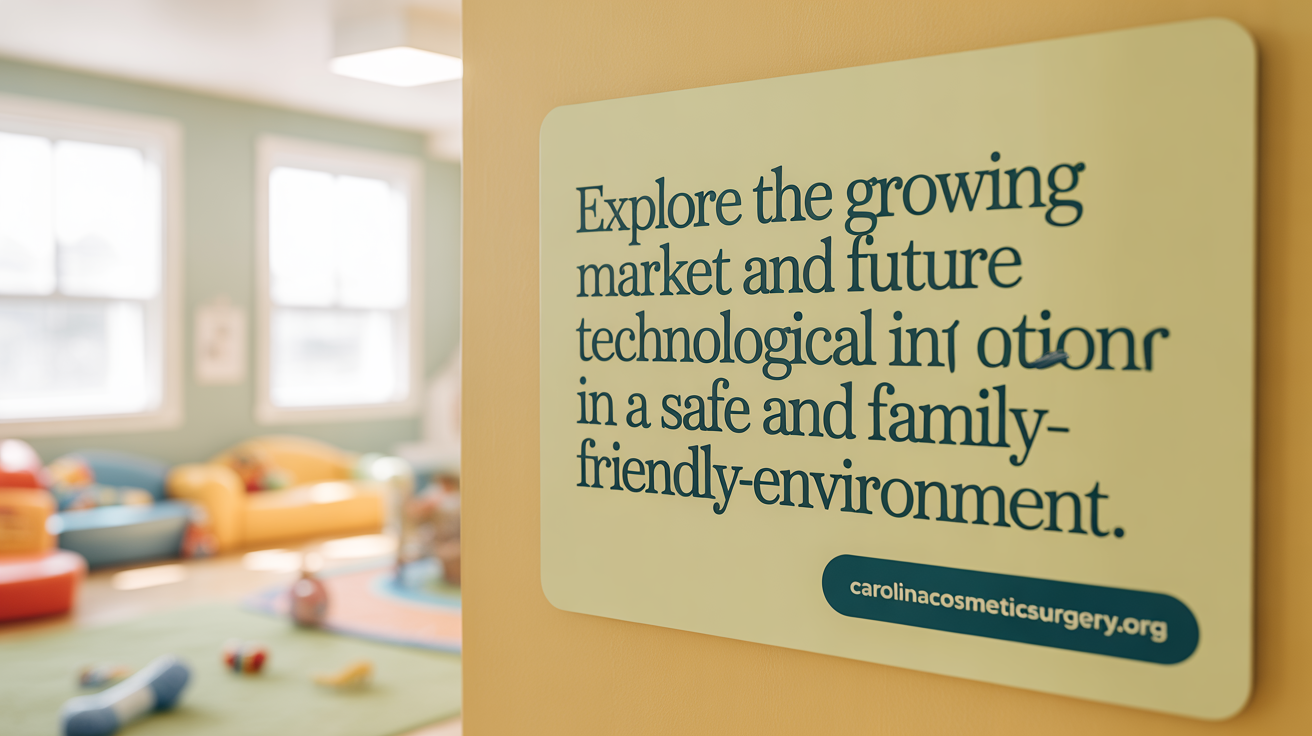
What are the general trends and projections for blepharoplasty (eyelid surgery) in 2025?
The blepharoplasty industry is expected to continue its growth trajectory in 2025. Industry estimates suggest an approximate market size of USD 5.1 billion, representing a compound annual growth rate (CAGR) of around 8.4% to 8.5%. This sustained expansion is driven by several factors, including a growing global aging population seeking anti-aging procedures, higher disposable incomes that enable more cosmetic spending, and technological advances that simplify and improve surgical outcomes.
Regionally, North America remains the dominant market share, thanks to widespread awareness, high aesthetic standards, and access to top-tier healthcare services. Meanwhile, the Asia Pacific region—especially countries like South Korea, Japan, and China—is experiencing rapid growth. This trend is fueled by changing beauty ideals, increased acceptance of cosmetic procedures, and technological innovations specific to this region.
Emerging trends in the market include a focus on natural-looking results and minimally invasive techniques. Laser-assisted surgeries, non-surgical options like injectables, and other non-invasive procedures are gaining popularity due to shorter recovery times and lower risks. These innovations align with the increasing demand for safer, quicker, and more effective cosmetic solutions.
Furthermore, the demographic landscape is shifting. An aging population is driving demand for both functional and aesthetic eyelid surgeries, while younger generations also seek preventive and corrective treatments to maintain a youthful appearance. Patients today prefer procedures that deliver lasting, natural-looking results, often accompanied by advanced technologies that enhance safety and satisfaction.
Overall, the blepharoplasty industry is set to thrive in 2025, supported by technological innovations, demographic shifts, and evolving consumer preferences. Local markets will differ in pace and focus—North America will continue leading in procedural complexity and technology use, while Asian markets will see the fastest growth driven by cultural trends and innovation.
Comprehensive Cost Analysis of Blepharoplasty in 2025
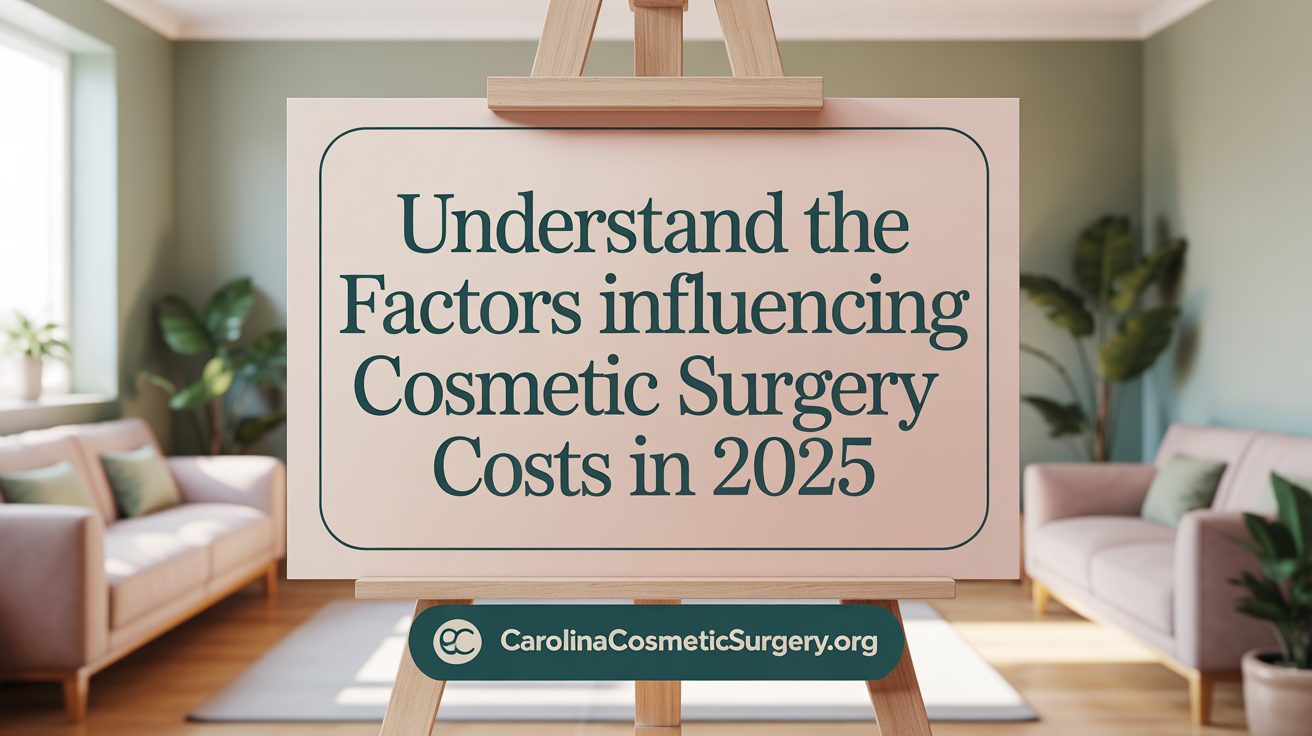
What factors influence the cost of blepharoplasty in 2025?
The price of eyelid surgery in 2025 depends on several key factors. Surgeon's experience and reputation are significant—more experienced specialists often charge higher fees due to their skill and the quality of results. Geographic location also impacts costs, with cities like Los Angeles, New York, and Houston tending to have higher prices than smaller towns.
The type of procedure—for instance, upper, lower, or both eyelids—affects the total expense. Combined surgeries usually cost more than individual procedures because they involve more surgery time and resources.
Facility and anesthesia fees are additional components. Surgery in a hospital or outpatient surgery center incurs different costs, with hospitals typically being more expensive. Using general anesthesia or sedation also influences pricing, with general anesthesia costing more.
Additional costs include pre-operative tests, medications, post-operative care, and possible revision procedures. The overall cost range can be broad, from approximately $3,000 to over $20,000, based on these factors and personal needs.
What is the average cost range for upper eyelid blepharoplasty?
For an upper eyelid blepharoplasty in 2025, the typical cost in Houston is between $3,000 and $4,500. This range considers the surgeon’s fees, facility costs, anesthesia, and other related expenses.
When you opt for both upper and lower eyelid surgery, the combined cost generally falls between $6,000 and $7,500. The final price depends on the complexity of the case, surgeon’s expertise, and the chosen surgical facility.
Patients should also account for additional costs like medications and follow-up visits, which ensure proper healing and satisfactory results. Overall, these estimates can aid in planning and budgeting for eyelid enhancement procedures.
Breakdown of cost components including surgeon fees, anesthesia, and facility fees
| Cost Component | Typical Range in 2025 | Description |
|---|---|---|
| Surgeon’s Fee | $3,000 – $6,000 | Based on experience, reputation, and procedure complexity |
| Anesthesia | $500 – $2,500 | Depends on whether local, sedation, or general anesthesia is used |
| Facility Fees | $1,000 – $4,000 | Surgery center vs. hospital; depends on location and amenities |
| Pre/post-operative tests | $200 – $800 | Blood tests, EKG, X-rays for safety |
| Medications & Follow-up | $200 – $600 | Pain meds, eye ointments, follow-up visits |
| Total Estimated Cost | $3,500 – over $20,000 | Overall cost varies widely with individual circumstances |
Influence of geographic location and surgeon experience on pricing
Location heavily influences blepharoplasty costs. Metropolitan areas with higher living costs, like Los Angeles or New York, tend to have higher surgical prices. Conversely, smaller cities or regions with lower overhead costs may offer more affordable options.
Surgeon experience also plays a role. Highly trained, board-certified surgeons with extensive experience and excellent reputations may charge a premium, but often provide better and safer results.
Patients should weigh these factors alongside their budget and desired outcomes when choosing a provider.
Insurance coverage nuances and financing options
Most health insurance plans do not cover purely cosmetic eyelid surgeries. However, if eyelid surgery is performed to improve vision obstructed by drooping eyelids, insurance might cover part or all of the procedure.
For patients concerned about upfront costs, many clinics offer financing options or payment plans. These arrangements allow patients to spread payments over time, making the procedure more accessible.
Overall, understanding the detailed cost components and exploring insurance and financing options can help patients make informed decisions about their eyelid surgery.
Regional and Procedure-Based Cost Variations
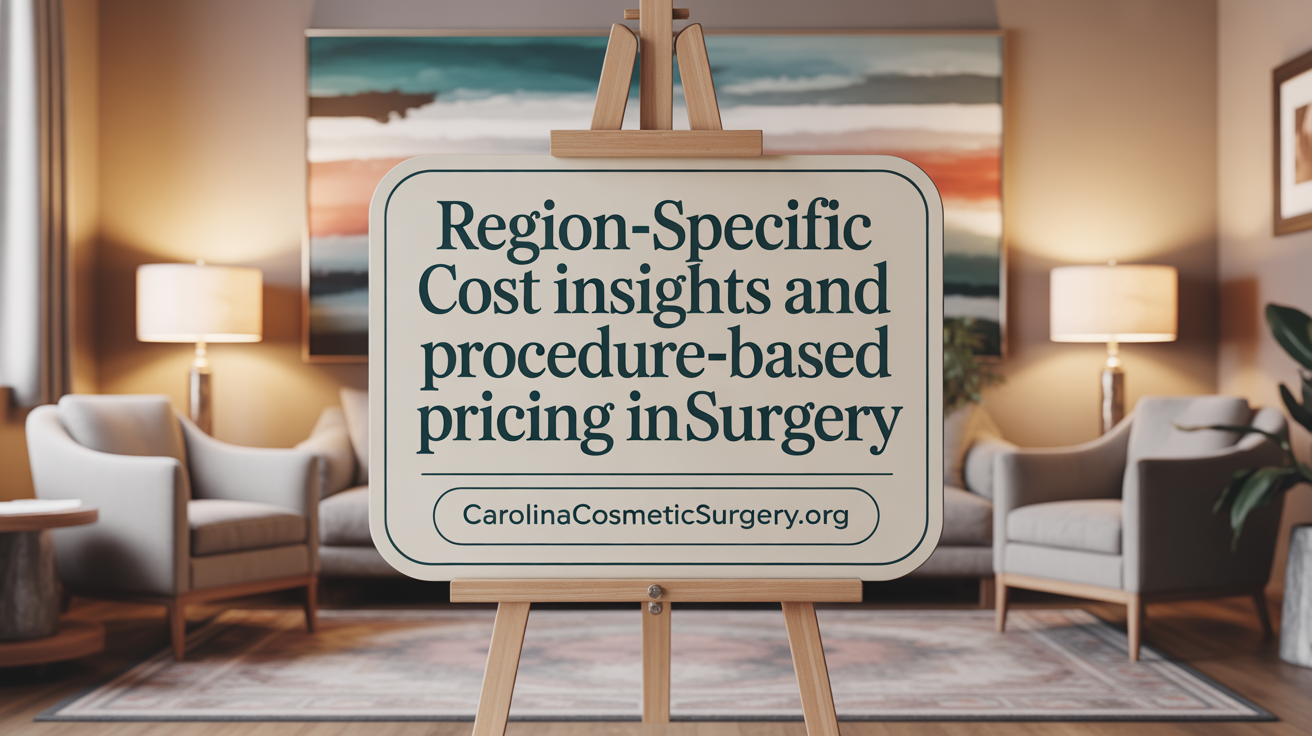
How do costs vary across different U.S. states and international regions?
The cost of eyelid surgery in the United States fluctuates depending on geographic location. For instance, in 2025, California typically reports higher prices, averaging around $4,582, while Wyoming's costs tend to be slightly lower at approximately $3,989. These differences are mainly due to varying living costs, local demand, and surgeon expertise. Nationwide, the average cost remains close to $4,451, with regional adjustments based on local economic factors.
Globally, the market shows significant variation. In Asia Pacific countries like South Korea, double eyelid (Asian blepharoplasty) can range from USD 1,000 to USD 3,000, often driven by cultural preferences and population demand. European countries also see rising costs with advanced procedures, though prices tend to be more regulated.
What are the price ranges for specialized techniques like transconjunctival blepharoplasty?
Specialized techniques can influence the overall expense. The transconjunctival approach, which involves internal incision, typically costs between $5,000 and $6,000. This method is often chosen for lower eyelid correction due to its effectiveness and minimal external scarring. Such techniques may increase costs due to the need for specialized skill and equipment.
How does the type of facility impact total expenses?
The choice of surgical facility also impacts the overall cost. Surgery centers, which generally have lower overhead costs than hospitals, offer more affordable options for outpatient procedures. Hospital-based surgeries may include additional facility fees that can significantly raise the price, especially if anesthesia or complex post-op care is required.
| Location/Facility Type | Typical Cost Range | Notes |
|---|---|---|
| Surgery centers (outpatient) | $3,200 - $4,500 | Often more affordable, quick turnaround |
| Hospitals | $4,500 - $6,000 | Higher facility and anesthesia fees |
| International regions (e.g., South Korea) | $1,000 - $3,000 | Lower costs, high demand for double eyelid procedures |
Understanding these disparities helps patients plan financially and choose the appropriate care setting for their eyelid surgery.
Safety Profiles and Risk Factors in Eyelid Surgery
What are the safety risks and complications associated with blepharoplasty, including rates of vision loss?
Eyelid surgery, or blepharoplasty, is generally regarded as a safe cosmetic procedure. However, like all surgeries, it entails some risks. One of the most serious, although rare, risks is vision loss. Current statistics indicate that the incidence of total vision loss post-blepharoplasty is approximately 0.0052%. Among these cases, permanent visual loss occurs in roughly 0.0033%, and temporary vision impairment in about 0.0019% of procedures.
The most common cause of vision loss following eyelid surgery is retrobulbar hemorrhage. This involves bleeding behind the eye, which can elevate intraorbital pressure and potentially damage the optic nerve if not managed promptly. Such complications require immediate medical attention.
Other less common but significant risks include acute angle-closure glaucoma (ACG), a condition that can cause rapid increase in eye pressure leading to blindness if untreated, and posterior ischemic optic neuropathy (PION), which can cause optic nerve damage due to insufficient blood flow.
Certain risk factors such as hypermetropia (farsightedness) or narrow anterior chambers can predispose patients to these complications. Preoperative assessments are crucial in identifying vulnerable individuals.
Preventative measures, including thorough surgical planning, gentle tissue handling, and addressing underlying risk factors, are essential practices.
Surgeon expertise plays a vital role in minimizing these risks. Highly experienced surgeons are better equipped to recognize potential issues early and manage complications swiftly, significantly reducing adverse outcomes.
While the probability of severe complications like vision loss remains very low, awareness and proper management are critical for patient safety. Patients should discuss these risks thoroughly with their surgeon and ensure that procedures are performed in accredited facilities by qualified professionals.
Outcomes and Patient Satisfaction Following Blepharoplasty
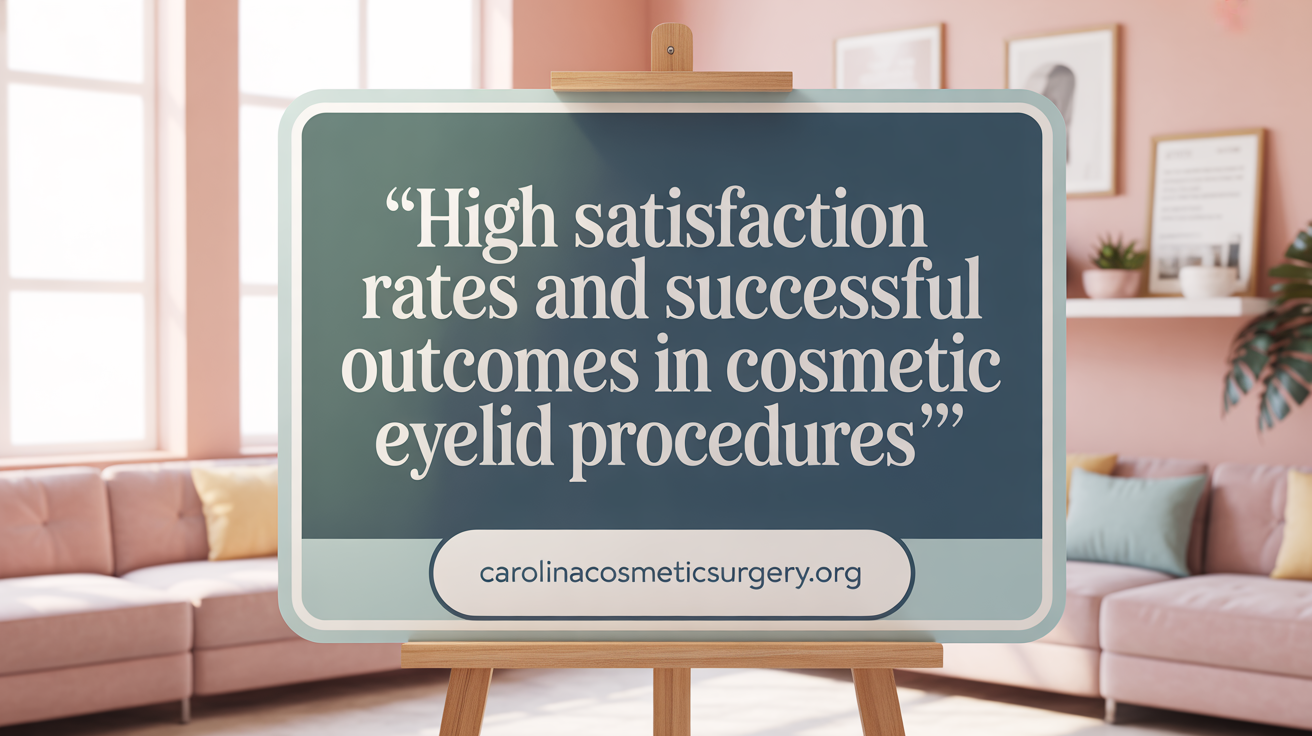
What are the success and satisfaction rates for eyelid surgery?
Eyelid surgery, also known as blepharoplasty, enjoys high success and patient satisfaction rates. Studies show success ranging from 85% to 90%, with most patients experiencing significant improvements in appearance and function.
Patient-reported outcomes reflect strong satisfaction, with over 95% of individuals on review platforms like RealSelf stating they have no regrets about their procedure. Professional surveys consistently report satisfaction levels above 87%, highlighting the procedure’s positive impact.
Adverse effects are rare and tend to diminish with time, contributing further to overall contentment. The procedure effectively addresses both cosmetic concerns, such as aged or tired-looking eyes, and functional issues like impaired vision due to drooping eyelids, making it a trusted option for many.
Insurance Coverage and Financial Considerations
When considering blepharoplasty, understanding how insurance may cover the procedure is essential for planning. Typically, insurance coverage depends on whether the surgery is classified as medically necessary or purely cosmetic.
When blepharoplasty is medically covered versus cosmetic: Insurance is more likely to cover eyelid surgery if it addresses a significant visual impairment caused by drooping eyelids. For example, if excess skin obstructs the upper visual field and impairs daily activities, documentation from your healthcare provider is required. The surgeon must provide detailed notes, and tests like visual field assessments may be necessary to demonstrate the functional impact. Conditions such as thyroid eye disease, congenital ptosis, or chronic dermatitis affecting the eyelids can also make the procedure eligible for coverage.
Conversely, cosmetic eyelid surgeries performed solely to improve appearance, such as removing excess skin to look more youthful, are generally considered elective and are not covered by insurance. In these cases, the patient must pay out of pocket.
Documentation requirements for insurance approval: To increase the chances of insurance approval, patients need comprehensive documentation. This includes physician notes explaining the necessity, visual field tests that show restriction, and clear photographs illustrating the eyelid droop. Pre-authorization or advanced benefit notice (ABN) forms may be required by insurers like Medicare to clarify the patient's financial responsibilities.
Use of financing options for out-of-pocket costs: Since most cosmetic blepharoplasty is not covered by insurance, many clinics offer financing plans to help manage expenses. These options allow patients to spread payments over several months, making the procedure more accessible.
Understanding these factors can help patients navigate the financial aspect of eyelid surgery and plan accordingly. Consulting with your surgeon and insurance provider beforehand ensures clarity on coverage and available financial support.
Future Outlook: Innovations and Market Growth Beyond 2025
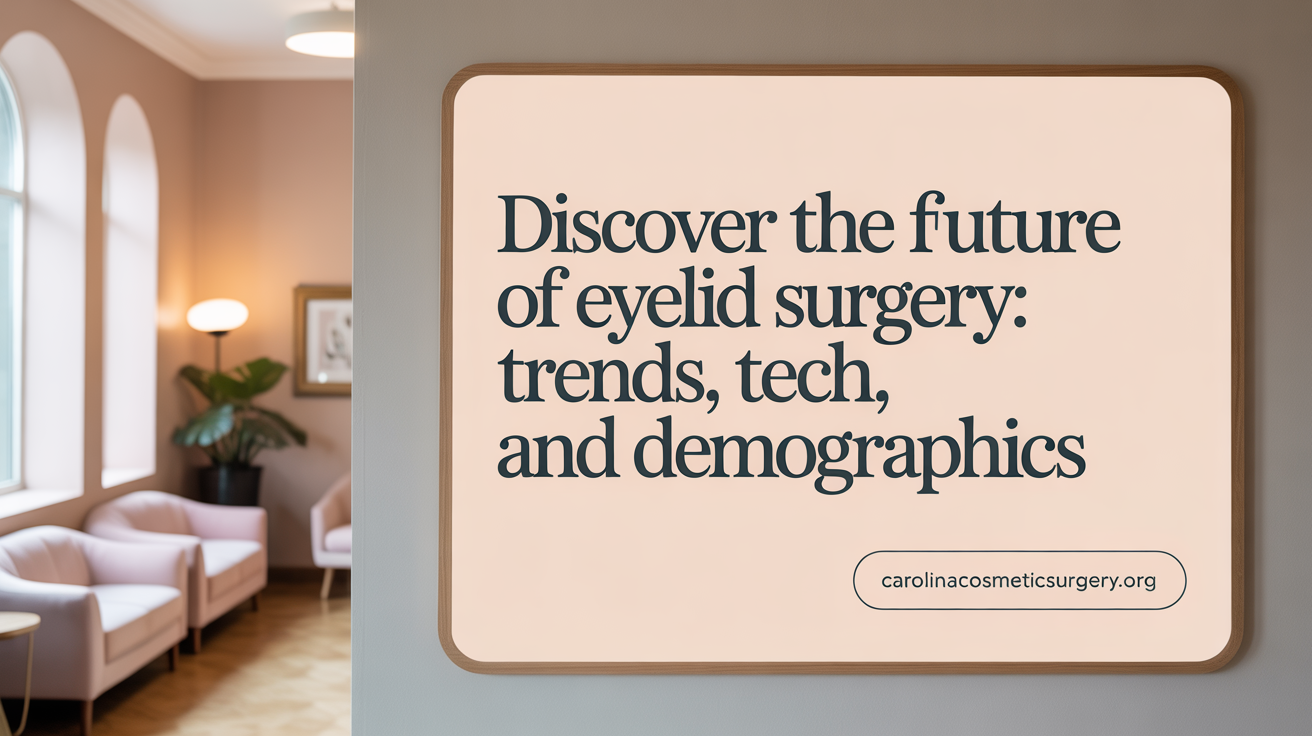
Projected global market expansion and CAGR to 2030 and beyond
The eyelid surgery market is experiencing rapid growth, with a valuation of USD 7.31 billion in 2024. Experts forecast the market will grow at a compound annual growth rate (CAGR) of approximately 5.6% from 2025, reaching around USD 10.15 billion by 2030. This steady expansion reflects increasing demand driven by aging populations and societal shifts toward aesthetic procedures.
Technological advancements influencing procedure efficiency and safety
Innovations in surgical techniques, such as laser-assisted blepharoplasty and non-surgical options, are transforming the field. These technologies aim to enhance safety, reduce recovery times, and improve results. Devices like laser shields and precision instruments enable minimally invasive procedures with more predictable outcomes.
Demographic shifts impacting demand for eyelid surgery
The aging global population is a significant factor boosting demand. Countries like South Korea see high popularity for procedures like double eyelid surgery, often driven by cultural beauty trends. Meanwhile, younger demographics also turn to eyelid surgery to counteract early signs of aging or for cosmetic enhancement.
| Future Market Features | Expected Trends | Additional Notes |
|---|---|---|
| Market Growth | Steady increase, reaching over USD 10 billion by 2030 | Driven by aging and beauty trends |
| Technological Innovations | Laser and non-invasive procedures | Lower risks, shorter downtime |
| Demographic Changes | Rising demand across age groups | Cultural influences in Asia, anti-aging focus globally |
As these innovations proliferate, the eyelid surgery industry will likely see continued expansion, with new technologies making procedures safer, quicker, and more effective. The trend towards minimally invasive treatments is expected to grow, meeting increasing patient demand for aesthetic and functional improvements.
Looking Ahead: Navigating Blepharoplasty in 2025 and Beyond
As blepharoplasty continues to evolve, 2025 promises sustained growth driven by demographic trends, technological advancements, and consumer preferences for both cosmetic appeal and functional improvement. Understanding the multifaceted aspects of cost, safety, insurance, and outcomes enables patients and providers to make informed decisions that optimize satisfaction and results. With a robust global market and innovations on the horizon, eyelid surgery remains a dynamic field offering promising opportunities for patients seeking rejuvenation and enhanced quality of life.
References
- Eyelid Surgery Cost - American Society of Plastic Surgeons
- Cost Analysis of Eyelid Surgery: What to Expect - The Naderi Center
- How Much Does Eyelid Surgery Cost? A Guide On Blepharoplasty ...
- Eyelid Surgery Market Size & Trends | Industry Report, 2030
- Cost of Blepharoplasty - Minneapolis, MN - Mesna Plastic Surgery
- How Much Does Blepharoplasty Cost in 2025? | South Bay & Torrance
- How Much Does Blepharoplasty (Eyelid Surgery) Cost? - CareCredit
- Blepharoplasty Market Size, Share & Growth Report, 2033
- Understanding the Pricing Eyelid Surgery Types | Atlanta
